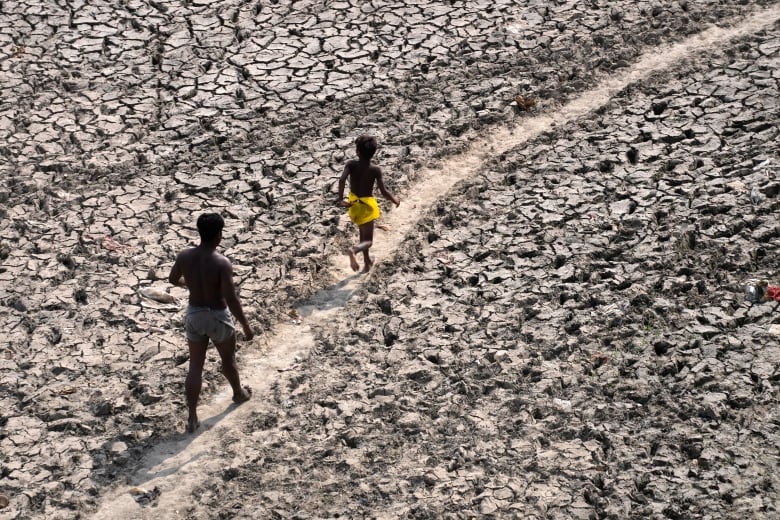Extreme weather events, from scorching heat waves to unusually heavy downpours, have caused widespread upheaval across the globe this year, with thousands of people killed and millions more displaced.
In the last three months, monsoon rains unleashed disastrous flooding in Bangladesh, and brutal heat waves seared parts of South Asia and Europe. Meanwhile, prolonged drought has left millions on the brink of famine in East Africa.
Much of this, scientists say, is what’s expected from climate change.
On Tuesday, a team of climate scientists published a study in the journal Environmental Research: Climate. The researchers scrutinized the role climate change has played in individual weather events over the past two decades.
The findings confirm warnings of how global warming will change our world — and also make clear what information is missing.
For heat waves and extreme rainfall, “we find we have a much better understanding of how the intensity of these events is changing due to climate change,” said study co-author Luke Harrington, a climate scientist at Victoria University of Wellington.
Less understood, however, is how climate change influences wildfires and drought.
For their review paper, scientists drew upon hundreds of “attribution” studies, or research that aims to calculate how climate change affected an extreme event using computer simulations and weather observations.
There are also large data gaps in many low and middle-income countries, making it harder to understand what’s happening in those regions, said co-author Friederike Otto, one of the climatologists leading the international research collaboration World Weather Attribution (WWA).
Climate change contributed to India heat wave
With heat waves, it’s highly probable that climate change is making things worse.
“Pretty much all heat waves across the world have been made more intense and more likely by climate change,” said study co-author Ben Clarke, an environmental scientist at the University of Oxford.
In general, a heat wave that previously had a 1 in 10 chance of occurring is now nearly three times as likely, and peaking at temperatures around 1 degree Celsius higher than it would have been without climate change.

An April heat wave where the mercury climbed above 50 C in India and Pakistan, for example, was made 30 times more likely by climate change, according to WWA.
Heat waves across the Northern Hemisphere in June — from Europe to the United States — highlight “exactly what our review paper shows: the frequency of heatwaves has gone up so much,” Otto said.
Impacts on rainfall vary by region
Last week, China saw extensive flooding, following heavy rains. At the same time, Bangladesh was hit with a flood-triggering deluge.
Overall, episodes of heavy rainfall are becoming more common and more intense. That’s because warmer air holds more moisture, so storm clouds are “heavier” before they eventually break.
Record-breaking rain in Asia has caused damage and flooding across a wide area including parts of China, India and southern Bangladesh.
Still, the impact varies by region, with some areas not receiving enough rain, the study said.
Scientists have a harder time figuring out how climate change affects drought.
Some regions have suffered ongoing dryness. Warmer temperatures in the U.S. West, for example, are melting the snowpack faster and driving evaporation, the study said.
And while East African droughts have yet to be linked directly to climate change, scientists say the decline in the spring rainy season is tied to warmer waters in the Indian Ocean. This causes rains to fall rapidly over the ocean before reaching the Horn.
Heat waves and drought conditions are also worsening wildfires, particularly megafires — those that burn more than 100,000 acres.
Fire raged across the U.S. state of New Mexico in April, after a controlled burn set under “much drier conditions than recognized” got out of control, according to the U.S. Forest Service. The fires burned 341,000 acres.
Storms getting more intense
On a global scale, the frequency of storms hasn’t increased. However, cyclones are now more common in the central Pacific and North Atlantic, and less so in the Bay of Bengal, western North Pacific and southern Indian Ocean, the study said.
There is also evidence that tropical storms are becoming more intense and even stalling overland, where they can deliver more rain on a single area.
So while climate change might not have made Cyclone Batsirai any more likely to have formed in February, it probably made it more intense, capable of destroying more than 120,000 homes when it hit Madagascar.
Reference-www.cbc.ca
